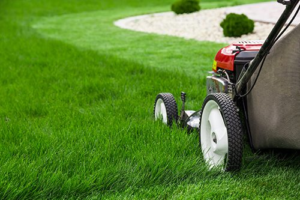
Whether you’re looking to revamp an outdated kitchen or merely update certain features, there are many steps to take. We recommend consulting your building’s alteration agreement for guidelines and to understand what you can and cannot do based on the rules.
Keep in mind that compromising on quality can have costly long-term effects. Choose durable materials, timeless designs and reliable appliances to ensure your kitchen stands the test of time. Find out more about Kitchen Renovation as you continue through the article.
Layout
The layout of your kitchen plays a key role in how you work and entertain. Tried-and-true concepts like the “work triangle” are helpful, but they can be tweaked to suit your needs and work with the architecture of your home. Depending on your budget and the resale value of your house, you may choose to keep your kitchen footprint and layout or radically change it to add more functionality or improve flow throughout the space.
A minor kitchen renovation could include surface upgrades and cabinet refacing, while a major remodel may involve structural changes. For example, adding a window, removing a wall, and moving plumbing or gas lines are considered major changes that will alter your kitchen’s floor plan and raise your project cost.
Choosing your general contractor early is essential. The GC will be your point person, troubleshooter, and guide during the remodel. They’ll be able to assess the extent of your project, make suggestions, and help you stay on budget. Many GCs also provide design services, but it’s best to ask what they offer and how much this will affect your costs.
The homeowners of this dated kitchen wanted a brighter, more functional space, so they started by painting the broad expanse of wood. Other changes included opening up the kitchen’s layout to capitalize on natural light, relocating appliances for more efficiency, redesigning the island, and installing a banquette breakfast area. The result is an airy, bright kitchen with a lot of storage. An L-shaped island offers workspace and seating, while a sleek range hood and floor-to-ceiling backsplashes add eye appeal. This kitchen is now a family-friendly entertaining zone that connects to the dining and living areas of the home.
Storage
Often, the decision to undertake a kitchen renovation is driven by a desire to make the space more efficient. This could mean relocating appliances, reorganizing the workflow or introducing more storage options. A full remodel also includes structural changes such as relocating walls, expanding the room or adding an entirely new section.
Fortunately, there are many smart kitchen storage ideas that can streamline the flow of the space and help free up valuable counter tops. Here are some of our favorites:
Add roll-out storage drawers to your cabinetry. They’re a great way to eliminate messy corners and make it easy to reach pots and pans. Incorporate a pantry closet into your kitchen design to keep seldom-used small appliances, cookware and bulk food items organized. If you have a lot of open wall space, hang a wire rack and fill it with baskets to store utensils, kitchen linens and other frequently used items for easy access.
If you have a lot of empty wall space, paint it a fun color or consider a chalkboard paint to transform it into a functional workspace. Whether you use it for a running grocery list or just to doodle, this wall storage idea is a great way to reduce paper clutter and give your kitchen a unique look.
If you’re considering a structural remodel, it’s important to hire professionals to ensure the job is done right and that your home is safe for your family. This includes working with a licensed plumber to install or replace your sink, faucet and dishwasher; an electrician for electrical wiring; and an HVAC contractor to install or update your furnace, ventilation and air conditioning based on your new layout and appliance requirements.
Appliances
Choosing the right appliances for your new kitchen is an important step in a renovation project. Not only do you want to make sure that your appliances match your style preferences, but you’ll also need to consider how the specific appliances fit into your existing kitchen and how they’ll be used in the future.
The best way to ensure that you’re selecting the right appliances for your remodel is to work with a trusted and knowledgeable retailer. They should be familiar with the unique features of multiple brands and be able to match your needs with the best product available. Before making a purchase, you should review reviews and warranty information, as well as visit the store to see the products in person. This will help you avoid purchasing a refrigerator that isn’t compatible with your kitchen or a range that won’t be able to accommodate a gas line.
Beyond the basic large appliances, you may also want to upgrade to specialty appliances that can improve efficiency or make cooking easier. For example, busy families might opt for a speed-cooking oven or an upgraded dishwasher that will reduce the amount of time they spend on meal prep.
Another consideration is lighting. A professional-designed lighting plan can bring the whole space together, while adding a personal touch. Lighting options can include recessed, ambient, and task lighting. Ambient lighting provides diffused brightness throughout the space, while task lighting focuses light on a specific area of the room, such as the sink or an eat-in nook. Pendant lights and chandeliers are popular options for adding a pop of design to the space. It’s also a good idea to prioritize fixtures that promote water and energy efficiency, which can reduce your overall cost of living.
Lighting
Lighting is a crucial element of kitchen renovations. Whether you want bright task lights to light up your work zones or warm ambience to set the mood after a meal, the right fixtures can transform your space. Choosing the right options involves taking into account your kitchen layout, home style, and desired functionality.
Ceiling and chandeliers provide ambient illumination and can serve as focal points for open spaces. They come in a range of styles so you can find one that aligns with your aesthetic. Pendants are great for lighting up dining areas and islands. They also come in a variety of styles, from modern farmhouse to maximalist. Recessed and track lighting can illuminate tight spaces and banish dark corners with their minimal appearance.
Accent lighting highlights a unique feature in your kitchen like your backsplash, a piece of artwork, or a decorative display. These can include pendants, under-cabinet, toe kick, and recessed lights. Wood is a popular material for under-cabinet lighting, but it scratches and dents with regular use. Quartz offers a durable alternative that comes in a range of colors and mimics the natural variation of marble or limestone.
If you’re working with a limited budget, it’s important to prioritize your needs and wants when selecting light fixtures. Choose energy efficient models where possible, and consider DIY installation tasks to minimize labor costs. Finally, make sure you have the right bulbs for your fixtures to maximize their brightness and look their best.
If you live in a co-op or condo, be sure to follow your building’s board approval process for renovation projects. Your board will need to review your plans and make sure the project complies with regulations regarding noise restrictions, contractors, insurance requirements, and any disruption mitigation measures.
Countertops
Countertops make a big impact on the look of your kitchen. They also play a key role in your space’s functionality and ergonomics. This is why the countertops you choose should work harmoniously with your cabinetry, flooring, and design choices. There are multiple countertop options on the market from natural stone and wood to solid surface material and tile. You’ll need to weigh the pros and cons of each before selecting a countertop for your home.
Natural stone countertops like granite, marble, and soapstone provide timeless beauty. They’re durable, heat-resistant, and available in a wide variety of colors and patterns. These types of countertops have a premium price tag but can last a lifetime.
For a more budget-friendly option, consider ceramic or stone tile countertops. They offer limitless design possibilities through their wide range of color and pattern options. However, they require regular maintenance and may be susceptible to mold growth.
Another great option is quartz, a man-made material that offers the look of natural stone with superior durability and stain resistance. Its nonporous surface makes it hygienic and easy to clean. This type of countertop is highly customizable to fit your kitchen layout with a choice of over 90 different looks and styles.
Lastly, consider travertine, a form of limestone that’s an affordable alternative to marble. It’s characterized by natural textures and veining and comes in many different colors, including neutral tones and earthy browns. Travertine can also be upgraded with a “raw edge” by chiseling the edges for a more rustic appearance.
You can also upgrade your counters with terrazzo, an eco-friendly solution that’s been around since 500 AD. This material combines concrete with recycled granite, marble, glass, and other materials.








